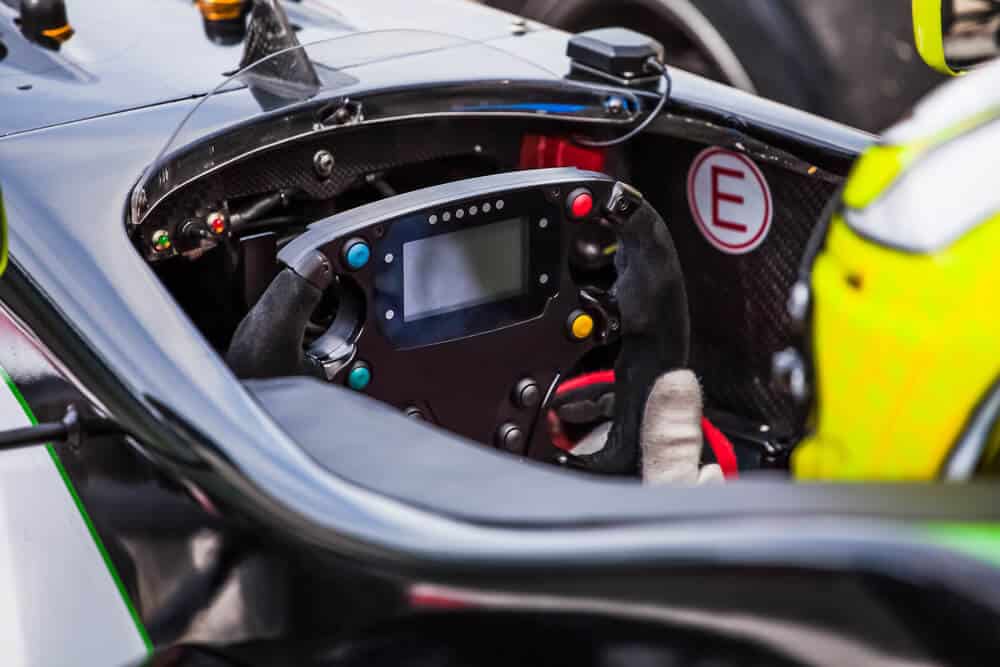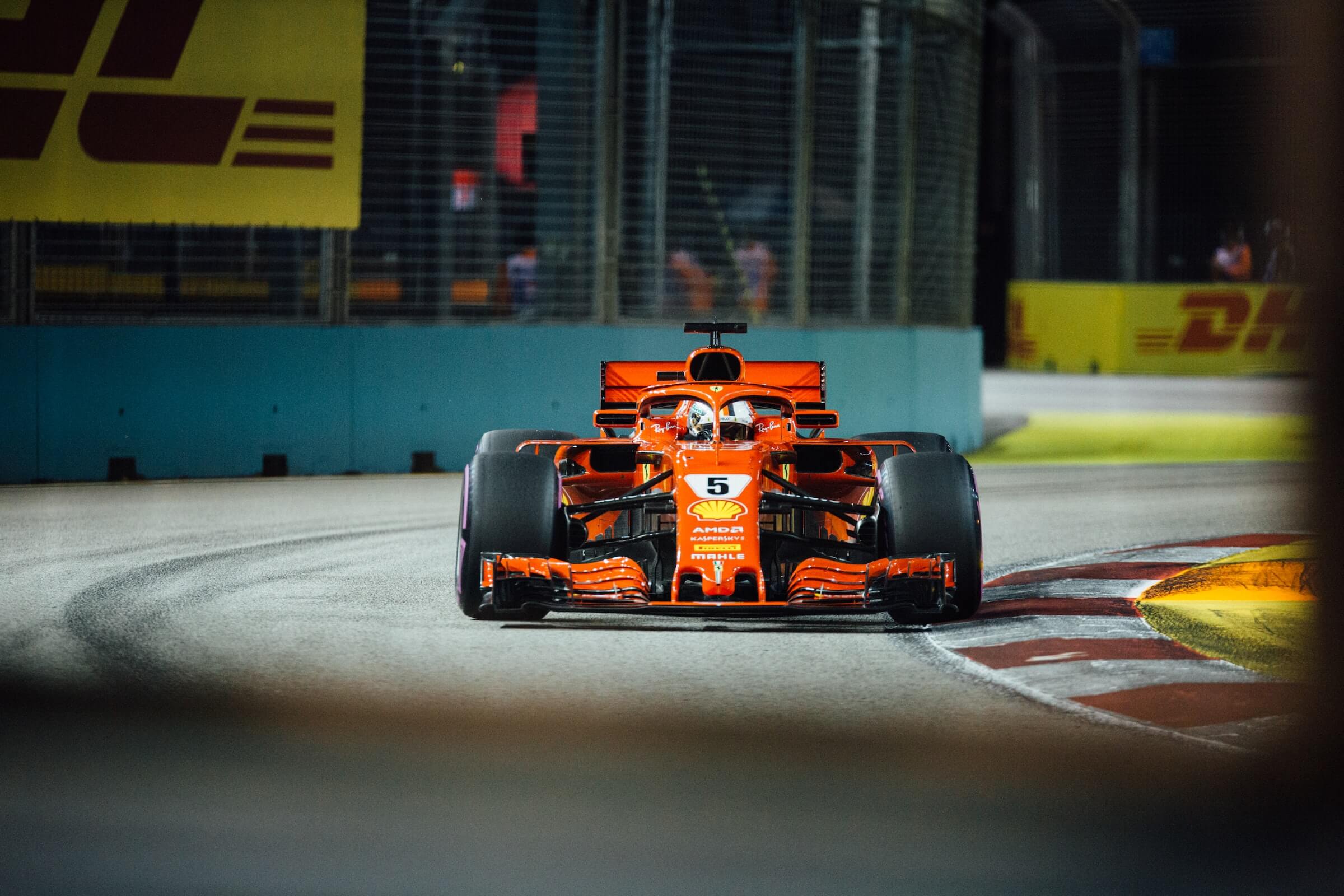To a regular F1 race viewer, the cockpit of an F1 car and its components may seem like something out of the ordinary. However, an F1 enthusiast knows the itsy bitsy details that go into designing each component and the complex science behind it.
In this article, I will be digging deeper into the world of cockpits and discussing some interesting facts and figures about it.
Table of Contents
Watch this video to understand what a cockpit is in a Formula One car.
What is a Cockpit in an F1 car?
The cockpit is the seating space for the driver. It is from this place that the driver controls the car and shows all his abilities on the racing track.
Key takeaways
- In F1, a Cockpit is the driver’s seating area
- The cockpit has a seat that is in a laid-back position and is made up of strong, shock-resistant materials.
- The cockpit can reach up to very high temperatures.
- It is closed up to the neck area of the driver.
- The cockpit has many protective features inside and surrounding it, the most prominent of these being the Halo safety feature.

Photo showing parts of Formula One car cockpit.
Understanding Cockpit
After hours and days of intense thinking and designing, engineers were able to come up with a distinctive feature in the F1 car from which the driver can sit back and take control over his car. It is from this space, that driver takes his car on an adrenaline-pumping journey on the tracks showcasing his amazing skills and abilities as an F1 driver.
What are Cockpits made up of?
Unlike the usual driving seats in regular cars, the seat in an F1 cockpit is in a laid-back position. This means that the driver is practically driving the car while being laid. All this and some additional features in the cockpit are all designed to ensure the safety of the driver. So the question arises, what goes into making the cockpit of an F1 car?
The monocoque, which surrounds the cockpit, is made up of a reshapable material that is crash protecting and absorbs most of the energy during an intense collision. In addition to that, the monocoque is layered with six millimeters of carbon Zylon, which is usually used in armored vests. The seat in the cockpit is made up of carbon fiber. Carbon fiber is known for its stiffness, and high tensile strength, and is resistant to chemicals and high temperatures.
Apart from all the safety features inside a cockpit, there are also monitors displaying the track action, game plan of the drivers, time lap, temperature, and more. There is also a steering wheel, power switch, breaks, and paddle. Unlike a regular car, the clutch in an F1 car is alongside the steering wheel instead of being on the pedals.
Why is the Formula One Cockpit so hot?
F1 cars are designed to achieve unparalleled speed on the tracks and are definitely not designed to be comfortable. One such reason for it to be uncomfortable is the heat that is being dissipated into the cockpit, where the driver sits.
The cockpit of the F1 car is heated due to several reasons. The brakes in an F1 car can only be used once the temperature of the car exceeds 390 Fahrenheit. This is why the temperature of the F1 car is 930 Fahrenheit most of the time, with it exceeding 1800 Fahrenheit in special circumstances.
The temperature of the gas that is combusted in an F1 vehicle can be as high as 4700 Fahrenheit. The pipes that exhaust gasses out of the car can reach temperatures as high as 1700 to 1800 Fahrenheit. This coupled with the air temperature, humidity, and exposure to the sun makes it inevitable for the cockpit to be so hot.
Why are the cockpits open and not closed?
F1 is a sport famous due to its open-wheel racing. Open cockpits allow the viewers to easily identify their favorite drivers from their distinctive helmets. They also provide an element of danger to the viewers, which is the reason why this sport is so attractive to people. However, many people argue that these factors are not enough to endanger the driver’s safety.
Safety has always been paramount in F1, with engineers constantly trying to improve the designs in order to make them much safer for the driver. One such safety feature added above the cockpit of the F1 is the halo. A halo is a Y-shaped structure made up of three prongs that protect the head of the driver from flying debris during a collision.
The cockpits started from being completely open to now being closed up to the shoulders of the driver. The head of the driver is the only body part that is visible from the F1 car. However, there could be a possibility of F1 cars having completely closed cockpits in the future to ensure the safety of the driver as much as possible.
A halo is a Y-shaped structure made up of three prongs that protect the head of the driver from flying debris during a collision.
Frequently asked questions about Cockpit in F1 cars
Why are F1 cars open in the cockpit?
Do F1 drivers pee in the cockpit?
What is inside an F1 cockpit?
How hot is an F1 cockpit?
How big is the cockpit in F1 cars?
Conclusion
Since the start of F1, there have been many changes in its design, and most certainly in its cockpit. However, the open cockpit is still one of the biggest arguable factors amongst the viewers, as it endangers their favorite driver’s safety despite the many protective features.
All in all, the F1 sport is one of the most engaging sports of all time, but the safety features are still not very acceptable to the viewers.
This is why engineers and team managers of F1 need to work toward making this sport a bit safer, and designing a closed cockpit could be a way towards a safer F1 sport.
Did you know that you can buy an F1 simulator cockpit so you can experience what it’s like to drive Formula 1 through a computer game? Read our top list of the best F1 simulator cockpits on the market.
Article sources
- https://www.racecar-engineering.com/articles/how-easy-is-it-to-introduce-closed-cockpits-to-f1/#:~:text=Open%20cockpits%20give%20the%20sport,key%20draws%20to%20the%20sport.
- https://www.essentiallysports.com/f1-news-about-cockpits-in-f1-including-dimensions-halo-others/
- https://www.essentiallysports.com/revealed-what-goes-inside-a-formula-one-cockpit/
- https://www.essentiallysports.com/f1-news-about-cockpits-in-f1-including-dimensions-halo-others/
- https://chooserealleather.com/culture/inside-an-f1-cockpit-surviving-the-drive/
Learn more about Formula One
Want to learn more about F1? Then visit our Formula 1 glossary and dictionary.



